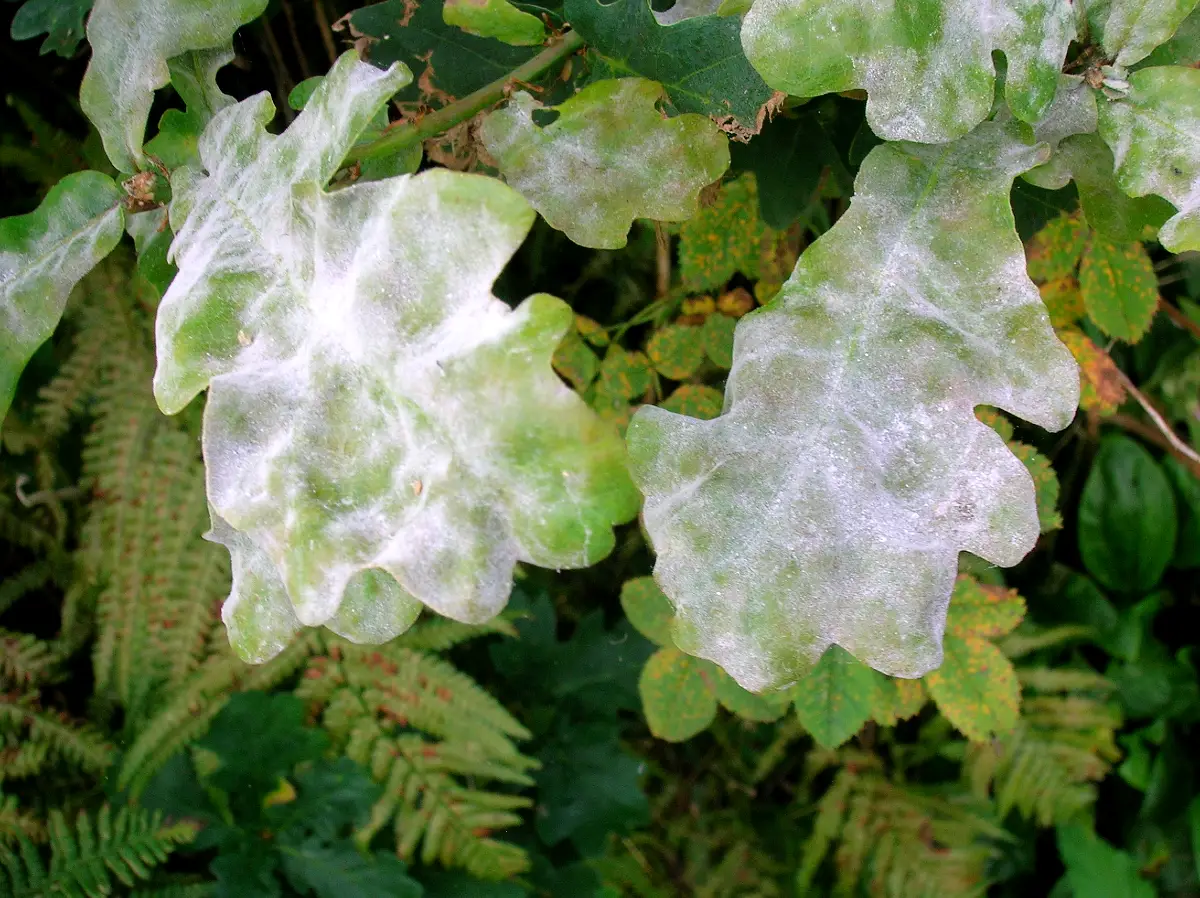Contents
- 1 CLASSIFICATION OF RHIZOPUS (BREAD MOLD)
- 2 STUDY OF HOSTS, DISEASES AND SYMPTOMS OF ERYSIPHE (POWDERY MILDEW)
- 3 STUDY OF VEGETATIVE STRUCTURE OF ERYSIPHE (POWDERY MILDEW)
- 4 STUDY OF CONIDIA OF ERYSIPHE (POWDERY MILDEW)
- 5 ASCOCARP, ASCI AND ASCOSPORES OF ERYSIPHE (POWDERY MILDEW)
- 6 IDENTIFICATION OF ERYSIPHE (POWDERY MILDEW)
- 7 REFERENCES
CLASSIFICATION OF RHIZOPUS (BREAD MOLD)
Kingdom :- Mycota
Division :- Eumycota
Sub-division :- Ascomycotina
Class :- Plectomycetes
Order :- Erysiphales
Family :- Erysiphaceae
Genus :- Erysiphe
The fungus is found as an ectoparasite on pea, wheat, cow pea, lathyrus, moong, urd, coriander, cumin, poppy, lady’s finger, cucurbits and barley which are cultivated allover India. The fungus would be readily identified by the white powdery covering on the host leaves.
STUDY OF HOSTS, DISEASES AND SYMPTOMS OF ERYSIPHE (POWDERY MILDEW)
All the species (approximately 22) of Erysiphe are obligate parasites which grow superficially on host (i.e. as ectoparasites). These generally parasitize angiosperms. The following three species are most important.
- polygoni infects pea (Pisum sativum; vern. matar; fam. Papilionaceae) and other economically important legumes viz. Vigna sinesis, Lathyrus sativus, Phaseolus lunatus, P. vulgaris and Vicia faba. It also parasitizes Coriandrum sativum, Cuminum cyminum, Papaver somniferum, etc. This fungus causes a disease commonly known as powdery mildew of peas. The earliest symptoms appear on the upper surface of the older leaves as small, white, circular and powdery spots and enlarge rapidly and cover the entire leaf surface. In advanced stages the leaves become covered with a white powder, get reduced in size and are finally shed. Immature pods are also attacked which become shrivelled and dried.
- graminis f. sp. hordei parasitizes barley (Hordeum vulgare; vern. jaii; fam. Graminae) and causes the powdery mildew of barley. E. graminis f. sp. tritici infects wheat. It is first evidenced as numerous colonies of superficial, flocculent growth on the upper surface of the leaves. They are white to begin with turning grey or red later on with a powdery appearance and form a cushion-like growth. The infection increases the transpiration and the plants become stunted through reduction. in size and number of leaves. The leaves that are not shed become wrinkled and deformed.
- cichoracearum infects tobacco (Nicotiana), lady’s finger or okra (Abelmoschus esculentus) and various cucurbits to cause powdery mildew.
STUDY OF VEGETATIVE STRUCTURE OF ERYSIPHE (POWDERY MILDEW)
- Since the fungus is an ectoparasite, the mycelium forms a white, interwoven covering on the host surface.
- The branched mycelium is septate and the cells are uninucleate.
- Mycelium produces simple, globose, lobed haustoria which penetrate the epidermal cells of the host.
- Generally haustoria are inflated but in others (E. graminis) these branch into finger-like projections.
STUDY OF CONIDIA OF ERYSIPHE (POWDERY MILDEW)
- The conidia are asexual reproductive bodies formed in chains at the tips of conidiophores.
- A conidiophore arises vertically from the mycelium. It is unbranched and swollen at the base in a characteristic manner.
- Each conidiophore bears at its tip many conidia arranged in a basipetal chain.
- The mature conidia are elliptical, barrel-shaped or sometimes even cylindrical and measure about 30-45 microns in length and 10-19 microns in breadth. S. The conidia are disseminated by wind and germinate by producing many germ tubes.
ASCOCARP, ASCI AND ASCOSPORES OF ERYSIPHE (POWDERY MILDEW)
- The ascocarp is a cleistothecium. It is formed after fertilization.
- It is a globose structure surrounded by a protective covering-the peridium which at maturity becomes 6-10 cells in thickness.
- Certain superficial cells of the peridium develop into characteristic elongated unbranched appendages with free ends.
- Within the peridium are present many asci which are more or less stalked and ovate.
- Each ascus generally contains eight ascospores (four to five in E. polygoni), two or rarely three in E. cichoracearum.
- The ascospores are elliptical, one celled, uninucleate and hyaline.
- The ascospores are set free either by an irregular cracking of the supper part of the peridium or the cleistothecium may split transversely from its upper part and may come off as a lid.
- The ascospores after liberation, germinate by producing a germ tube, if they happen to fall on a suitable host.
IDENTIFICATION OF ERYSIPHE (POWDERY MILDEW)
- Kingdom – Mycota
- Chlorophyll absent
- Reserve food glycogen
- Cell wall of fungal cellulose.
- Division – Eumycota
- A definite cell wall present.
- Sub-division:- Ascomycotina
- Mycelium septate.
- Spores borne endogenously in the ascus.
- Spores in definite numbers, in multiples of two, usually eight.
- Class:- Plectomycetes
- Ascocarp, a cleistothecium.
- Order– Erysiphales
- Ectoparasites
- Family – Erysiphaceae
- Aerial mycelium hyaline
- Enormous production of conidia on host surface gives it a white powdery appearance.
- Genus – Erysiphe
- Ascospores one celled.
- Cleistothecia normally containing many asci
- Appendages or fruiting body hypha-like.
REFERENCES


Leave a Reply